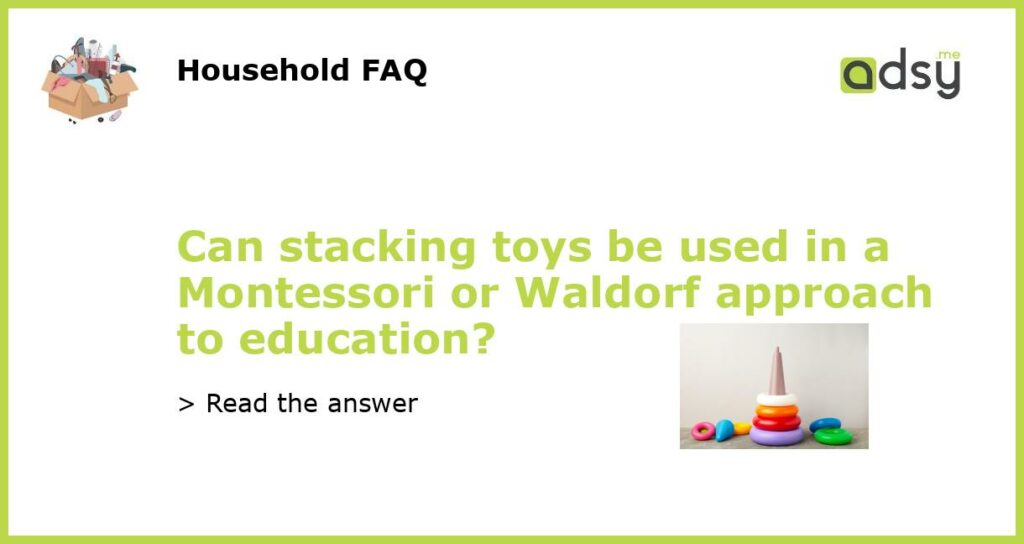Stacking Toys in Montessori and Waldorf Education
Stacking toys have long been a popular choice for children’s play and development. They offer a wide range of benefits, including cognitive, physical, and social development. Both the Montessori and Waldorf educational approaches recognize the importance of hands-on, open-ended play in a child’s development. In this article, we will explore how stacking toys can be incorporated into a Montessori or Waldorf approach to education.
Benefits of Stacking Toys
Before delving into the specific educational approaches, it is important to understand the benefits of stacking toys. Stacking toys help enhance a child’s fine motor skills, hand-eye coordination, and spatial awareness. As children stack and balance blocks or other objects, they are actively engaging their minds and bodies. This process helps to develop concentration, focus, and problem-solving skills, as children experiment with different ways of building and balancing.
Montessori Approach
The Montessori approach to education emphasizes a child-centered learning environment that fosters independence, exploration, and self-discovery. Stacking toys align well with the Montessori philosophy as they encourage independent play and exploration. In a Montessori classroom, stacking toys are often made of natural materials, such as wood, to promote a connection to the natural world.
The Montessori method also emphasizes the importance of sequential learning and the development of order and organization. Stacking toys can be used to teach children about size, shape, and color, as they learn to stack blocks in a specific order. This helps develop their cognitive skills, as well as their ability to follow instructions and work independently.
Waldorf Approach
The Waldorf education approach focuses on nurturing a child’s imagination and creative thinking. Stacking toys play a significant role in this approach, as they allow children to explore their creativity and create their own structures and designs. Waldorf stacking toys are often made of natural and sensory-rich materials, such as wood or fabric, to enhance the sensory experience.
In a Waldorf classroom, stacking toys are typically open-ended, meaning that they can be used in multiple ways and are not limited to a specific design or function. This encourages children to use their imagination and creativity, as they build and explore different structures and patterns. Stacking toys also provide an opportunity for social interaction and collaboration, as children can work together to build larger structures or engage in pretend play.
Integration in Education
Both the Montessori and Waldorf approaches recognize the importance of hands-on, experiential learning. Stacking toys can be easily integrated into these educational settings to enhance the learning experience.
In a Montessori classroom, stacking toys can be used as part of a sensory table or tray, where children can explore different textures, sizes, and shapes. They can also be incorporated into math or language activities, where children can stack blocks to represent numbers or letters. Stacking toys can support the development of fine motor skills and coordination, as children manipulate the blocks.
In a Waldorf classroom, stacking toys can be used as part of imaginative play areas, where children can create their own structures and designs. They can also be integrated into storytelling and story creation, where children can use the stacking toys to recreate scenes from a book or create their own stories. The open-ended nature of stacking toys allows for endless possibilities and encourages children to think creatively.
In conclusion
Stacking toys have a valuable place in both Montessori and Waldorf educational approaches. They offer numerous benefits for children’s cognitive, physical, and social development. Stacking toys align with the principles of independence, creativity, and exploration that are central to both approaches. By incorporating stacking toys into the classroom, educators can create rich learning environments that foster holistic development and provide children with the tools they need to thrive.






